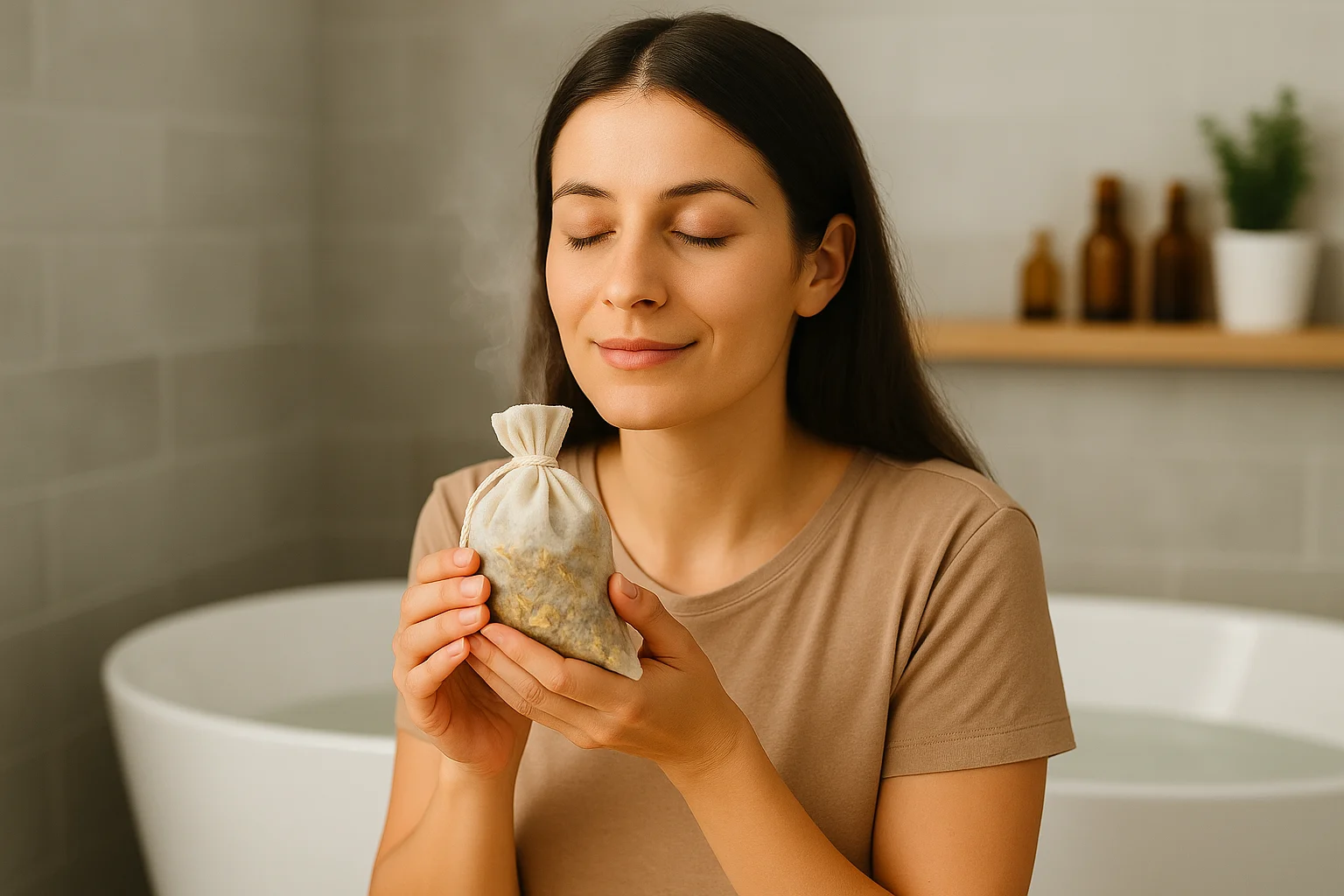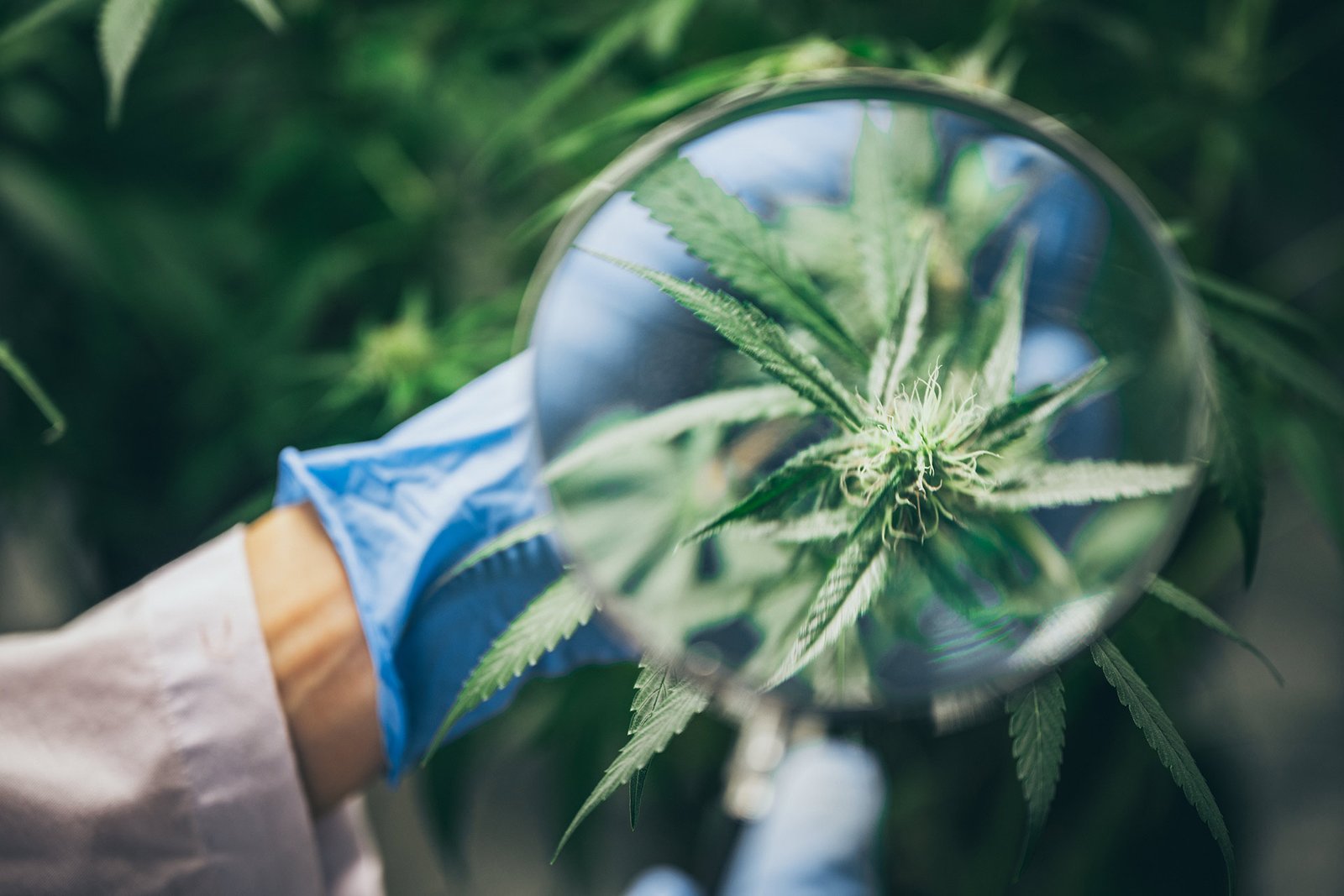
How to Create a Herbal Bath Ritual for Relaxation at Home
- September 29, 2025
Herbal baths calm the mind and body by combining warm water therapy with plant compounds that soothe skin, ease muscle tension, and support restful sleep. Trusted bath herbs include chamomile, calendula, lavender, rosemary, nettle, lemon balm, peppermint, elderflower, marshmallow root, and rose petals.
In the UK, herbal baths are returning as a simple home ritual that blends wellness and skincare. People want clean ingredients, gentle methods, and a realistic way to wind down. A well made herbal bath is not just hot water. It is a short ritual that relaxes the nervous system, nourishes the skin barrier, and sets the tone for better sleep.
CTA: Explore our herbs and bath friendly botanicals →
Why herbal baths are popular in the UK now
- Clean beauty mindset. Fewer synthetics and more recognisable ingredients.
- At home self care. A calm routine that fits busy evenings.
- Skin first wellness. Gentler care for dry, reactive, or stressed skin.
- Tradition plus evidence. British herbal use meets modern research on sleep, stress, and skin hydration.
What a herbal bath does for body and mind
Nervous system relief and sleep support
Warm water reduces muscle tone and signals the body to shift into a rest state. Chamomile, lavender, and lemon balm add gentle aromatics that help the mind slow down before bed.
Skin barrier and moisture balance
Calendula, marshmallow root, and nettle release soothing polysaccharides and minerals. These support the skin barrier and ease the feeling of tightness after a long day indoors.
Breath and head comfort from steam
Steam carries light aromatics from rosemary, peppermint, and elderflower. Many people find this clears a foggy head and makes breathing feel easier during seasonal changes.
Circulation and muscle ease
Rosemary and peppermint bring a mild tingle that pairs well with warm water. This feels good after long desk work or a workout.
Choosing herbs by goal
Pick two or three herbs that match your intent. Use flowers and leaves for infusions. Use roots and bark for a longer simmer called a decoction.
| Goal | Best herbs | Why they fit | Notes |
|---|---|---|---|
| Deep calm and sleep | Chamomile, Lavender, Lemon Balm | Gentle aromatics calm the nervous system | Ideal for evening baths |
| Comfort for dry or reactive skin | Calendula, Marshmallow Root, Nettle Leaf | Soothing mucilage and minerals support the barrier | Keep water warm not hot |
| Clear and refresh | Rosemary, Peppermint, Elderflower | Light aroma and steam feel opening and fresh | Great for morning or post workout |
| Uplift and balance mood | Rose Petals, Lemon Balm, Chamomile | Soft fragrance plus gentle calm | Pairs well with a short breath practice |
CTA: Select your bath herbs from our shop →
Bath recipes you can trust
Calming bedtime soak
- 1 handful chamomile flowers
- 1 handful lavender flowers
- Optional 1 handful lemon balm
Steep 2 to 3 litres just off the boil for 20 minutes. Strain into a warm bath. Soak for 20 to 30 minutes.
Skin comfort soak for dry or reactive skin
- 1 handful calendula petals
- 1 handful marshmallow root
- 1 handful nettle leaf
Simmer marshmallow root in 2 litres for 15 minutes. Turn off heat. Add calendula and nettle. Cover and infuse 20 minutes. Strain into the bath.
Clear head morning bath
- 1 handful rosemary
- 1 handful peppermint
- 1 handful elderflower
Infuse 2 to 3 litres for 15 to 20 minutes. Strain. Use in a warm bath. Finish with a cool rinse on the legs if you like.
Gentle mood lift ritual
- 1 handful rose petals
- 1 handful chamomile
- Optional 1 handful lemon balm
Infuse 2 litres for 15 to 20 minutes. Strain. Add to warm water. Sit quietly for the first five minutes and breathe slowly.
Method that always works
- Measure herbs. Two to three loose handfuls total per bath is enough.
- Prepare water. Use a kettle or pot. Aim for just off the boil.
- Infuse or simmer. Flowers and leaves need a covered infusion. Roots need a gentle simmer then an infusion.
- Strain well. Pour the golden liquid into your bath.
- Soak for 20 to 30 minutes. Keep water warm not too hot.
- Pat skin dry. Seal moisture with a simple body oil if your skin is dry.
Enhancers that play well with herbs
- Oat sock. A handful of rolled oats in a sock for skin softness.
- Plain Epsom or sea salt. Great after exercise. One to two cups in the tub.
- Honey. A tablespoon in the infusion for a silky feel.
- Carrier oil drizzle. A teaspoon of sweet almond or sunflower in the water for extra slip. Be careful when you stand up.
Important safety notes
- Patch test new herbs on the inner arm before your first bath.
- Keep bath water warm not hot to protect the skin barrier.
- Pregnancy and nursing need extra care. Avoid strong rosemary and sage. Ask a qualified practitioner if unsure.
- Photosensitivity can occur with St John’s Wort oil on sun exposed skin. Keep those products for night use only.
- If you have a diagnosed skin condition, speak with your clinician before starting a new routine.
Sourcing and storage
Choose clean and well dried herbs. Store in airtight jars away from heat and light. Refresh once a year so your bath always smells fresh and works as intended.
CTA: Shop bath friendly herbs and build your ritual today →
FAQ
Do herbal baths really relax the body
Yes. Warm water supports circulation and muscle release. Herbs add aromatics and skin soothing compounds that help many people unwind and sleep better.
Can I use tinctures instead of dried herbs
Yes. Add a small amount of tincture to hot water first so alcohol flashes off. Then pour the liquid into the bath.
Which herbs are best for sensitive skin
Calendula, marshmallow root, and chamomile are the most gentle. Keep water warm and time to 20 minutes.
How often can I take a herbal bath
One to two times per week works well for most people. Keep sessions short and skin friendly.
Should I use liver herbs like milk thistle in the bath
No. Milk thistle and similar herbs work best when taken internally under guidance. For baths, choose herbs with proven topical and aromatic benefits such as chamomile, calendula, lavender, rosemary, nettle, and lemon balm.
References
Recent Post

Medical Marijuana for Cancer
January 10, 2023

Medical Marijuana Needs to Be Legal
January 7, 2023

Is CBD Oil Safe to Use? Explaining
January 1, 2023
Contact Now
Explore our wide range of natural herbal products crafted for your wellness and everyday care.
Book An Appointment
Schedule a personalized consultation with Herbarium Choices to explore tailored herbal solutions for your health. Let us guide you toward a balanced and vibrant lifestyle.
